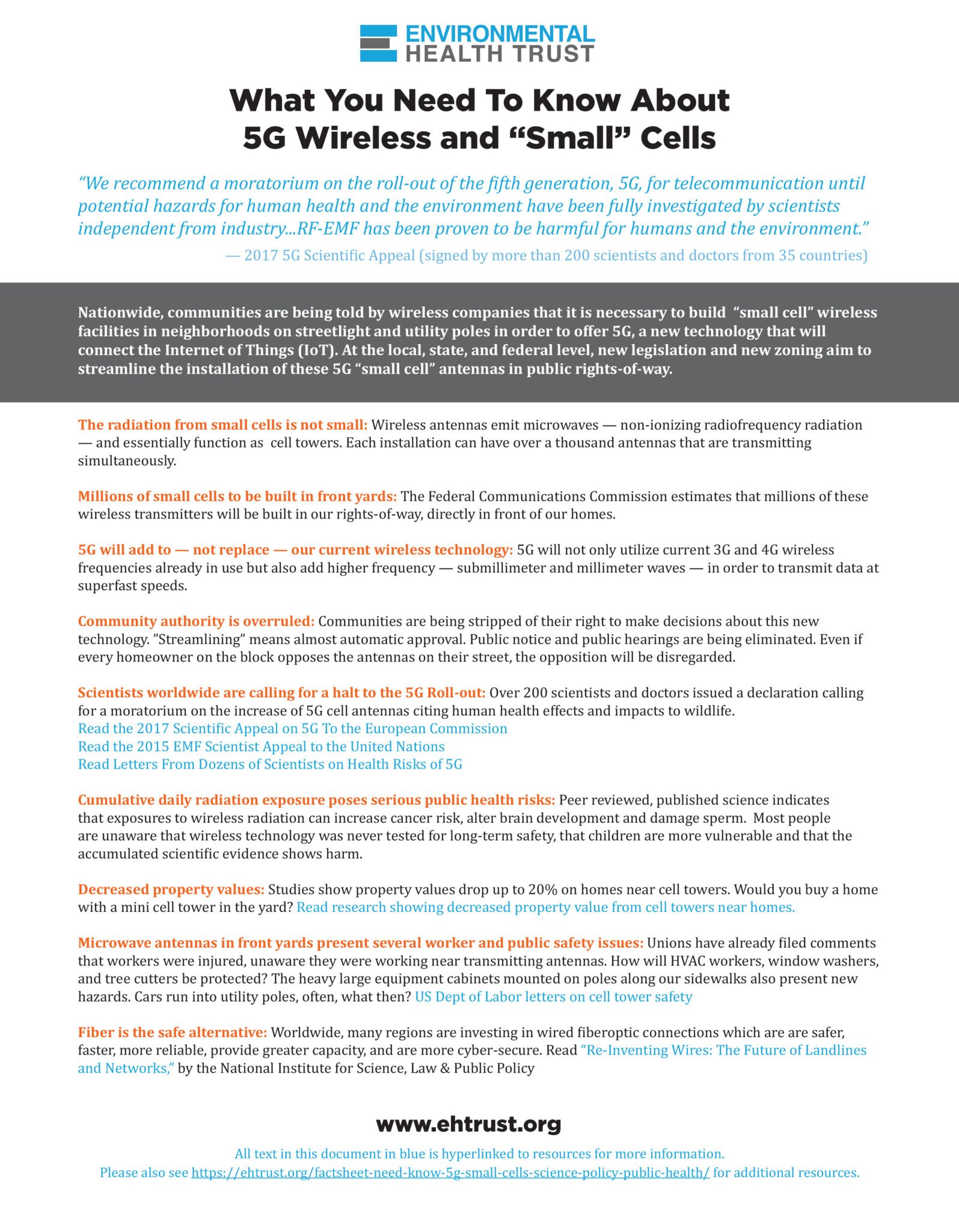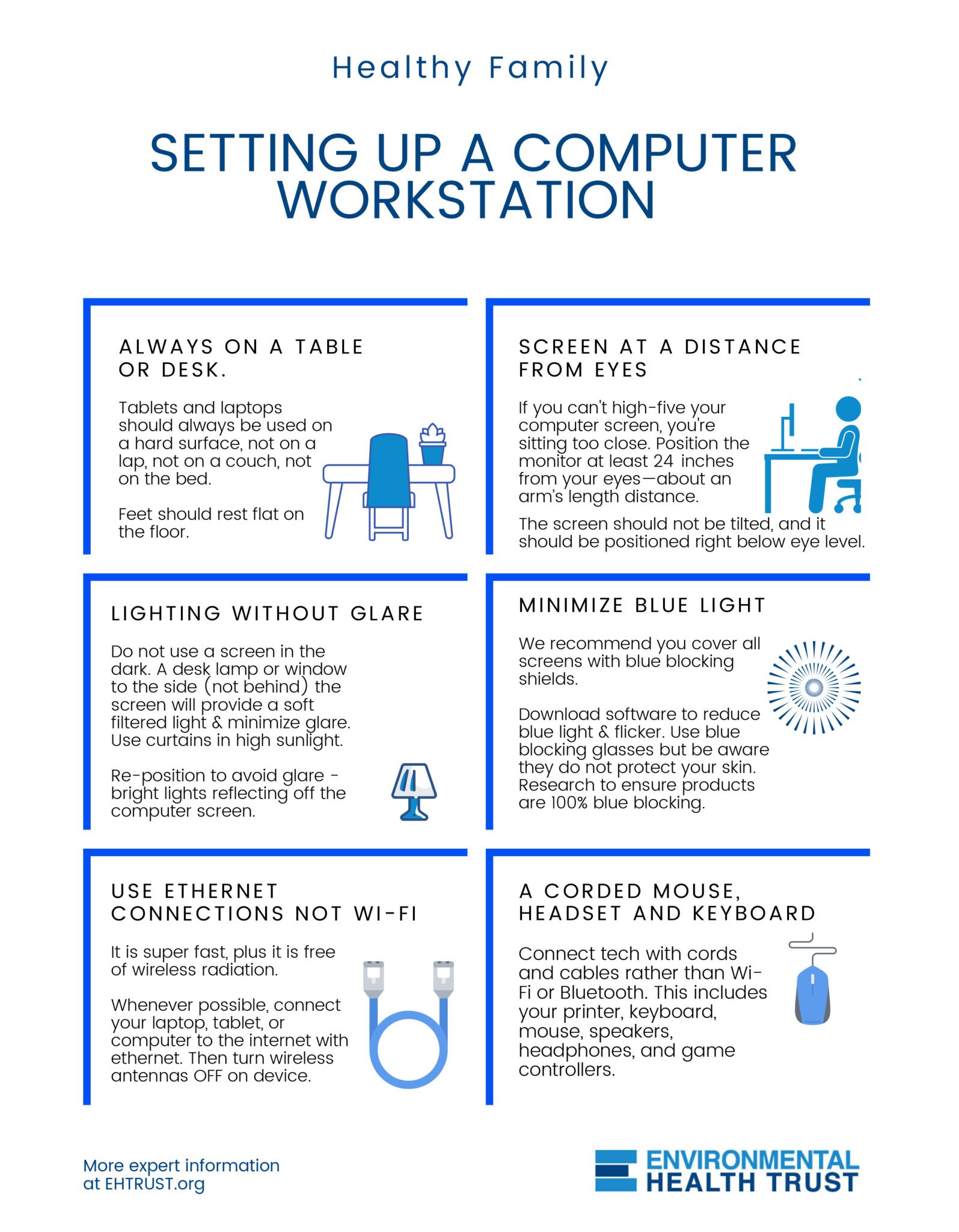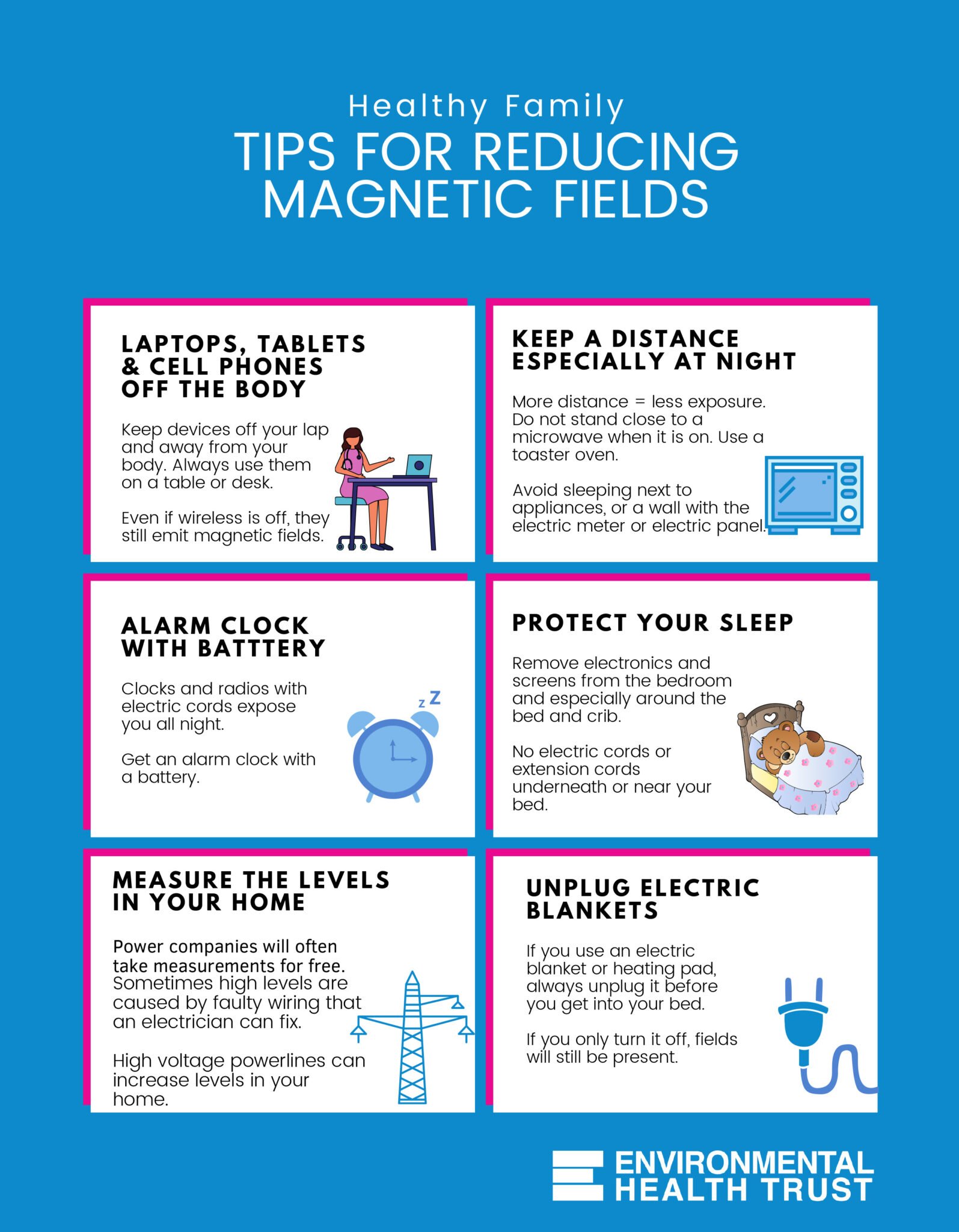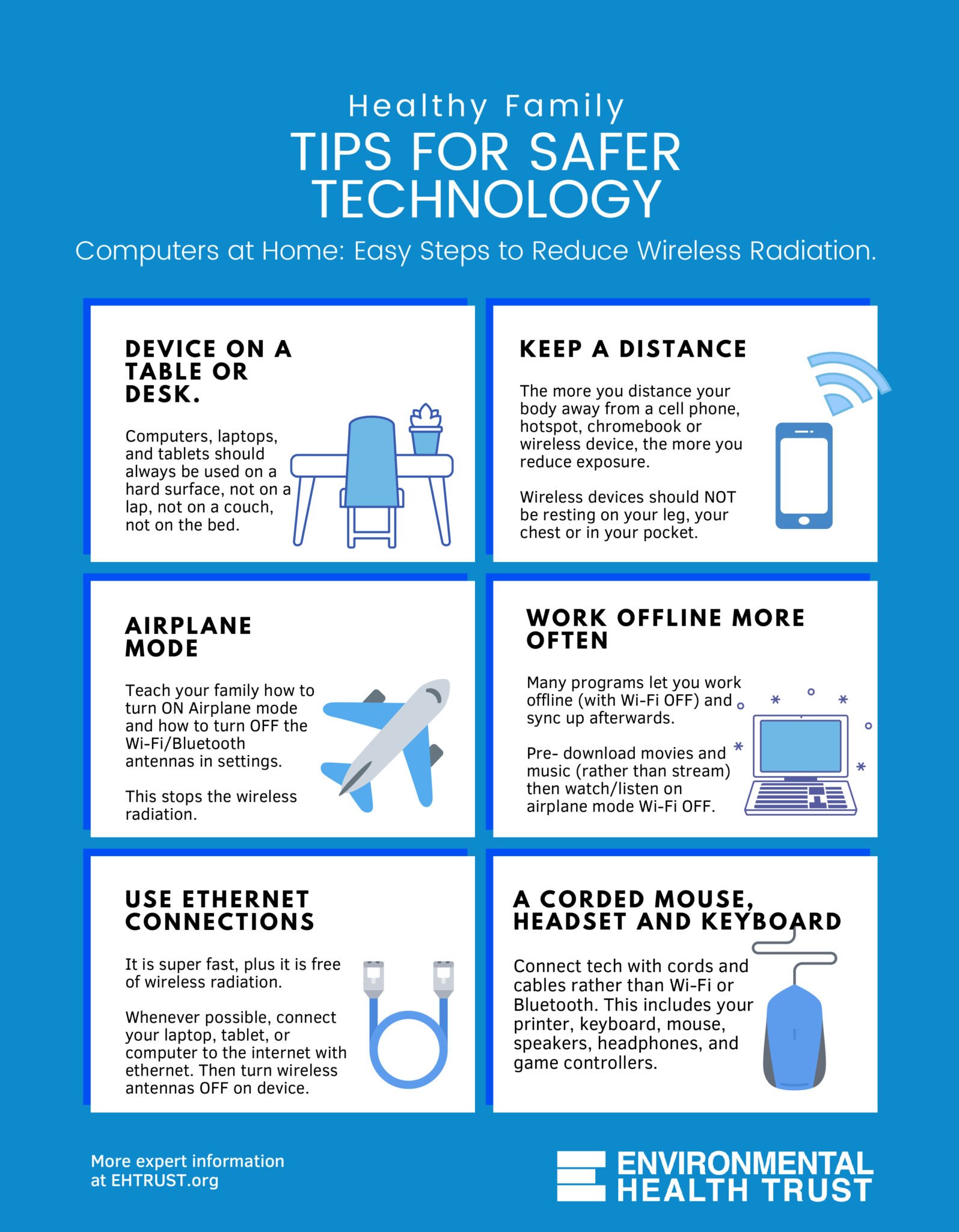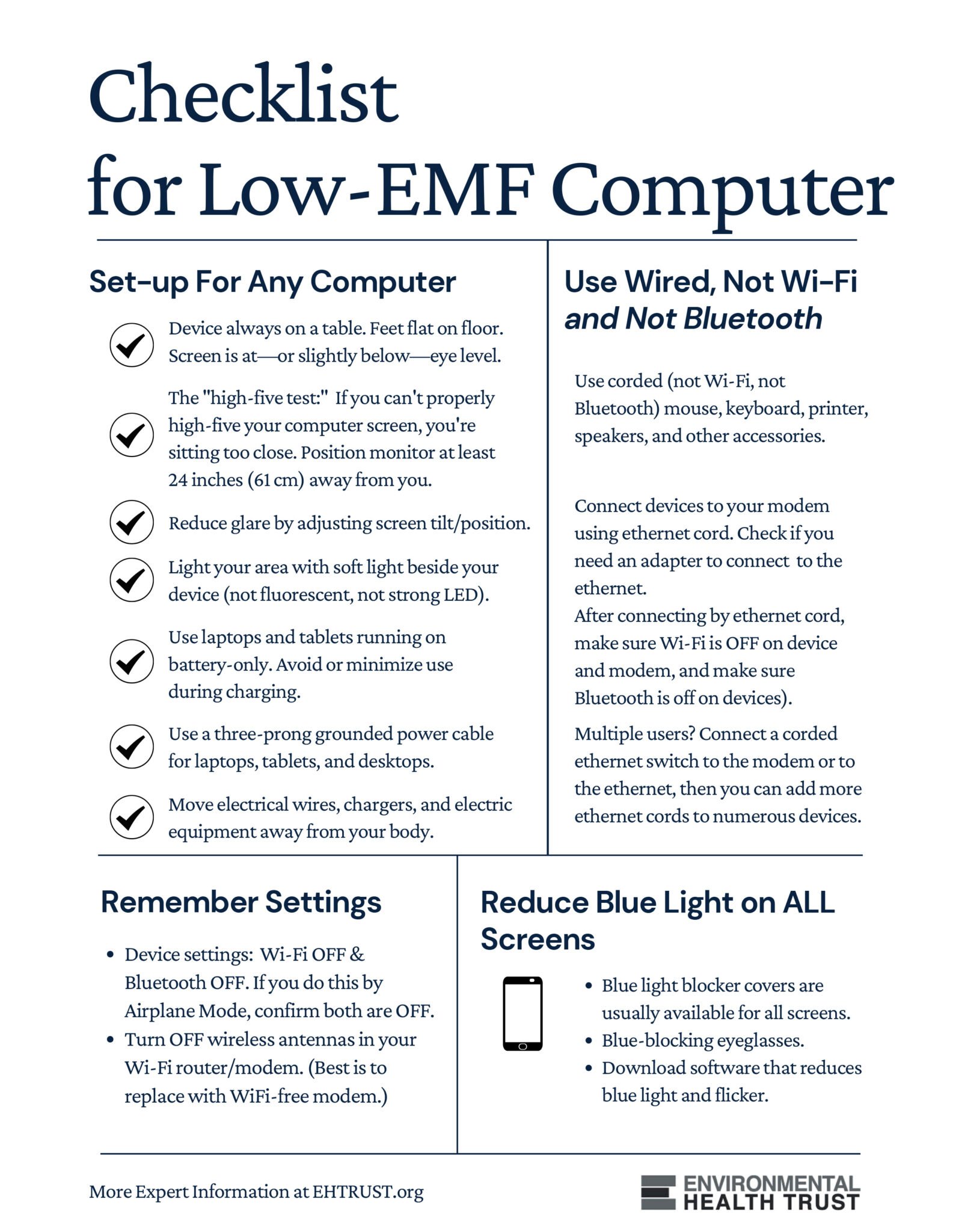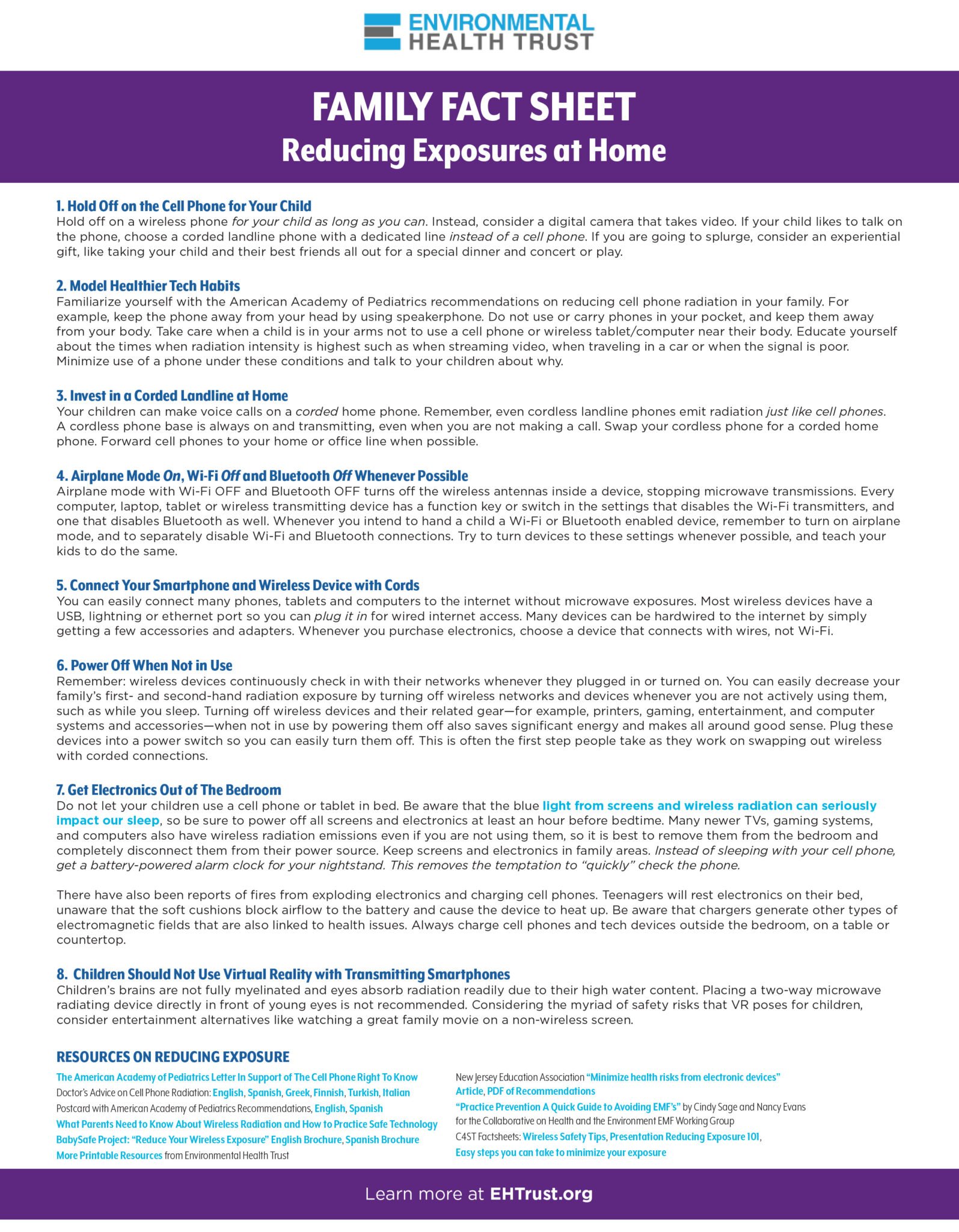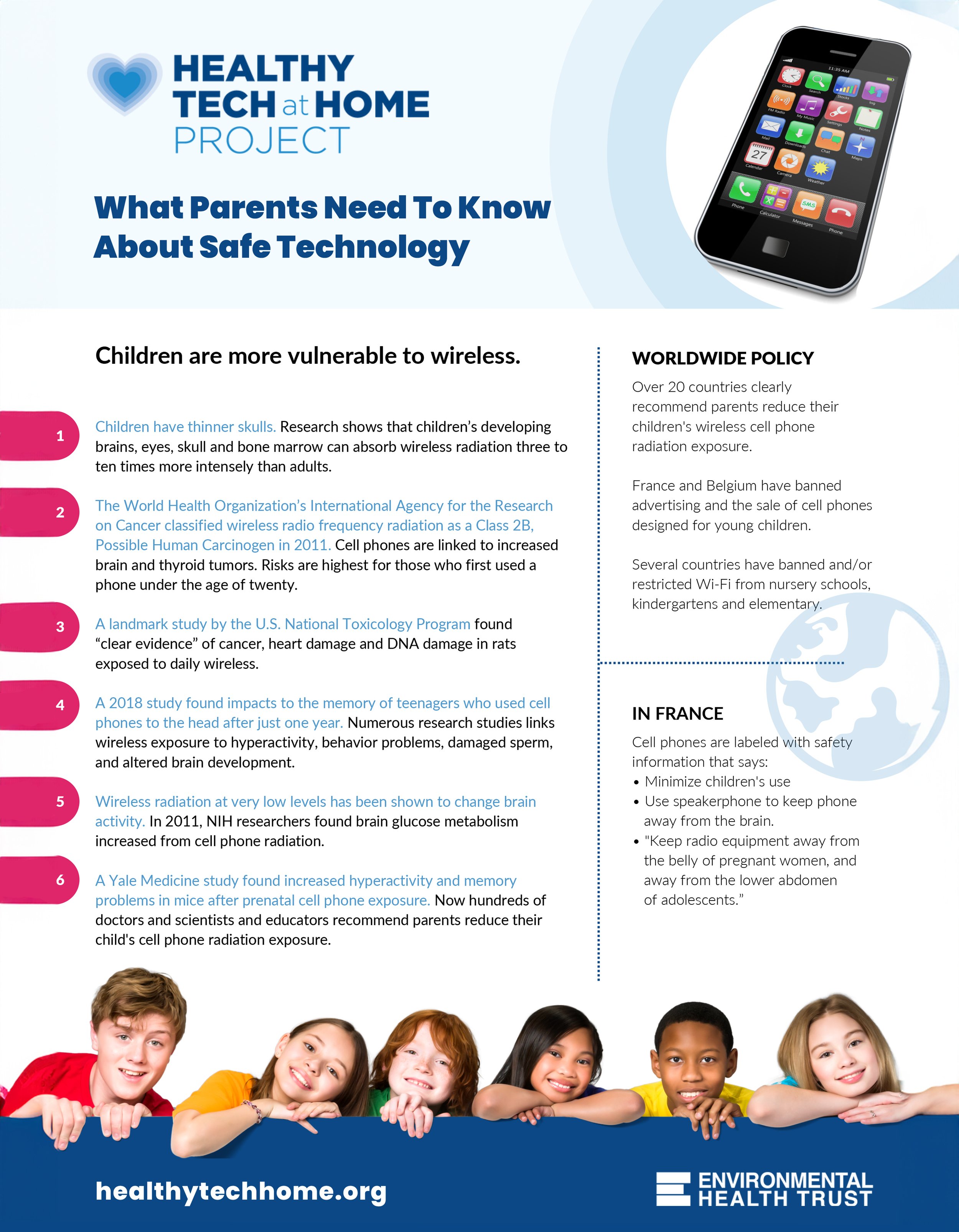Top 10 Safe Tech Tips from EHT INCLUDING RESOURCES…
1. Distance is Important
One basic, very important concept is “Distance Is Your Friend.” The amount of wireless
radiation absorbed into people decreases very rapidly when you increase the distance
from wireless devices.
Decrease your exposure by increasing your distance from wireless emitting sources. For
example, always keep cell phones and wireless laptops away from your body.
2. Identify Sources in Your Home
Take a look around your home. How many wireless things do you have?
Become aware of the various emitting sources in your surroundings first so you can
address each one step by step.
Keeping a distance from devices is just the first step in reducing your risk. The next step
is identifying safer ways to get the connections you need but without the wireless
radiation. Here is a list of things that emit wireless commonly found in homes:
computers, smart speakers, Wi-Fi router, gaming consoles, cordless phones, cordless
mouse, mobile phones, and wireless security systems.
3. Get to Know Airplane Mode
“Airplane mode”, also known as “flight mode,” is a setting on your wireless device that
stops the microwave radiation emissions. It turns antennas to OFF. Learning how to use
airplane mode is one of our most important tips. On some devices airplane mode only
turns cellular antennas, so you also need to check and turn off other antennas that could
be on such as Wi-Fi or Bluetooth.
On every computer, laptop, tablet, or WTD, there is a function key that turns OFF the Wi-Fi
transmitter. There is also a function key that turns OFF the Bluetooth transmissions.
Whenever you hand a child a technology device such as cell phone, tablet, or laptop,
please set the Airplane mode to ON, and Wi-Fi to OFF, and Bluetooth to OFF.
Devices should be used on a table and never on a lap.
4. Get a Corded Landline
Home cordless phones emit radiation like cell phones. Most cordless phone base
stations constantly emit high levels of microwave radiation regardless of whether or not
any connected handset is in use.
Corded landlines have no wireless radiation emissions. So every home should have a
corded landline (with a curly cord to the handset) if possible. Then you can forward cell
phones to your home line while you are at home. Prefer the landline corded phone for
most voice conversations.
If you cannot get a copper landline you can use a Voice over Internet Protocol system or
purchase a telephone line connection from your Internet provider.
5. Reduce Your Mobile Phone Radiation Exposure
First, try to minimize your overall cell phone use to decrease the time you are exposed.
For adults who must use a mobile phone:
– Use speaker phone or a plug-in earpiece to keep the phone away from your brain and
body, and when you are not using the phone be sure to power off or set the phone on
Airplane/Flight mode and the Wi-Fi to OFF and the Bluetooth to OFF.
– Prefer texting instead of voice calls and hold the phone out, away from your body when
you press “send,” and do not rest your phone against your abdomen as you text.
– Do not carry a powered ON mobile phone in your pocket or bra.
– Turn automatic updates off. Reduce active Apps. Cell phones emit radiation constantly,
even when you are not actively using them. Even if you turn wireless antennas off, they
are still emitting magnetic fields so power them 100% off before you carry them near
your body.
– Children should not use mobile phones except for emergencies.
Note: The safest way to use a cell phone is to turn it off and use a corded landline.
Environmental Health Trust has a detailed step by step on reducing cell phone
radiation here.
6. Turn It Off When Not In Use
We want to be clear that turning things “off when not in use” still results in significant
wireless exposure. EHT recommends you swap out wireless devices with safe wired
connections. However, for many people, they feel overwhelmed or are unable to do this
immediately. That is why turning things off when not in use is often the first step people
take. Then we highly recommend you move to the next step which is swapping out
wireless devices with safe corded connections.
Wireless enabled devices are always transmitting radiation even when you are not surfing
the internet or using the device to talk or message. The only way to stop these emissions
is to set the wireless antennas to OFF.
Why?
Wi-Fi devices continuously check in with their main network (cell tower or Wi-Fi router) to
be sure a connection exists. This radiation activity is called a digital handshake.
For example, a Wi-Fi router emits a beacon signal at regular intervals to signal the
available network (whether or not any person or machine is using the network). Similarly,
a Wi-Fi enabled tablet or other personal use devices will also signal at regular intervals
hunting for a network (whether or not a person is using that connection). Those signals
are all radiation emissions.
You can easily decrease your family’s firsthand and secondhand radiation exposure by
turning off wireless networks and devices whenever you are not actively using them, such
as at night while you sleep.
Unplugging wireless devices (and their related gear)—for example, gaming,
entertainment, and computer systems—when not in use also saves significant
energy and makes all-around good sense.
Note: Turning Wi-Fi off when not in use only eliminates wireless exposures while the WiFi
is OFF. However, you will still be exposed when the Wi-Fi is ON. Therefore, be aware you
are still getting significant exposure when the Wi-Fi is ON.
7. Prefer Corded Technology Connections
For home phones (landline), internet, printer, speakers, and entertainment gear, connect
by cord or cable with all wireless features off.
Wi-Fi Internet Connections at Home: As an easy first step, power off the Wi-Fi router at
bedtime. Then ask your internet provider how to connect with plug-in cords and turn off
the antennae feature of the modem or router. Many companies allow you to manage the
wireless settings online and you can simply turn it off via the internet. Sometimes a swap
to a non-wireless modem is necessary.
Wire Up Game Stations and Controllers: Choose gaming devices that have the option to
connect the hand controllers with a cord.
Hardwire Accessories (Printer, Keyboard, Mouse, Speakers, etc.): Wi-Fi printers, your
cordless mouse, and your virtual assistant speaker are a hidden source of constant Wi-Fi
emissions, just like a Wi-Fi router or cordless phone base.
Remember: If a user or tracking device is wireless, it has wireless radiation emissions.
8. Power Off Wireless Devices When Driving
Power off mobile phones and wireless connectivity in vehicles. Mobile devices distract
drivers even if hands-free. Mobile phones and streaming tablets and laptops also emit
higher power radiation during travel because the metal surroundings create radiation
hotspots inside the driver and passenger areas of your vehicle.
Use an old fashioned GPS without wireless. Plan ahead so that you do not need to use
any brain phones or wirelessly enabled devices in the car. Going on a road trip and your
children want to watch movies? Before you leave, download the movies onto the device
so that during the trip wireless access is not necessary. Call your car manufacturer to
learn how to turn the wireless antennas ( Bluetooth or Wi-Fi) to OFF in the car.
9. Protect Children and Pregnant Women
Rethink how you use mobile phones when you are near children. Children’s skulls are
thinner than adults’ and their brains are still developing. Hence, radiation from mobile
phones penetrates more deeply into their brains and is likely to cause more damage.
For example, do not use a mobile phone while an infant is on your lap, and do not carry
your mobile phone in your baby carrier. Keep a transmitting mobile phone or wireless
device away from a child’s brain and body.
10. Safeguard Your Sleep
Pew Research reported that 75% of children sleep every night with their mobile phone
beneath their pillow. Wireless radiation and blue light impacts sleep. So be sure to power
off all screens and electronics well before bedtime.
Need an alarm on your phone? You can set the phone to Airplane/Flight Mode ON and the
Wi-Fi and Bluetooth to OFF and still use the alarm feature.
Many newer TVs, gaming systems, and computers plugged into electricity or on battery
power will have radiation emissions even if in power off mode, so it is best to remove
them from the bedroom or completely disconnect them from their power source.
Be sure to charge cell phones and tech devices outside the bedroom, because charger
gear generates other types of electromagnetic fields that are also linked to health issues.
Locate screens in family areas—not in bedrooms.
Safe Tech Resources from Environmental Health Trust



